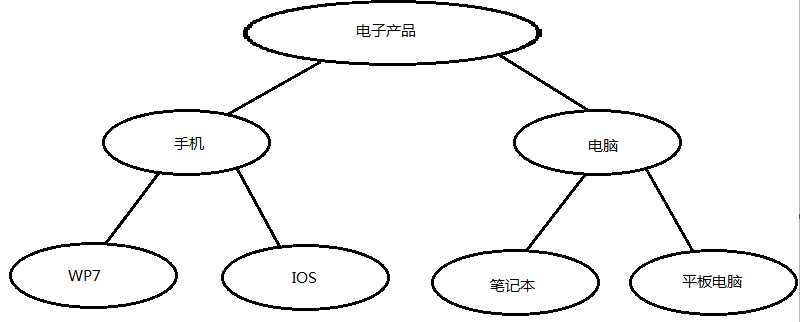标签:
第一种关联关系:一对多(多对一)
"一对多"是最普遍的映射关系,简单来讲就如消费者与订单的关系。
一对多:从消费者角的度来说一个消费者可以有多个订单,即为一对多。
多对一:从订单的角度来说多个订单可以对应一个消费者,即为多对一。
一对多关系在hbm文件中的配置信息:
消费者(一方):
<?xml version="1.0" encoding="utf-8"?>
<!DOCTYPE hibernate-mapping PUBLIC "-//Hibernate/Hibernate Mapping DTD 3.0//EN" "http://hibernate.sourceforge.net/hibernate-mapping-3.0.dtd">
<hibernate-mapping>
<class name="com.suxiaolei.hibernate.pojos.Customer" table="customer">
<!-- 主键设置 -->
<id name="id" type="string">
<column name="id"></column>
<generator class="uuid"></generator>
</id>
<!-- 属性设置 -->
<property name="username" column="username" type="string"></property>
<property name="balance" column="balance" type="integer"></property>
<set name="orders" inverse="true" cascade="all">
<key column="customer_id" ></key>
<one-to-many class="com.suxiaolei.hibernate.pojos.Order"/>
</set>
</class>
</hibernate-mapping>
订单(多方):
<?xml version="1.0" encoding="utf-8"?>
<!DOCTYPE hibernate-mapping PUBLIC "-//Hibernate/Hibernate Mapping DTD 3.0//EN" "http://hibernate.sourceforge.net/hibernate-mapping-3.0.dtd">
<hibernate-mapping>
<class name="com.suxiaolei.hibernate.pojos.Order" table="orders">
<id name="id" type="string">
<column name="id"></column>
<generator class="uuid"></generator>
</id>
<property name="orderNumber" column="orderNumber" type="string"></property>
<property name="cost" column="cost" type="integer"></property>
<many-to-one name="customer" class="com.suxiaolei.hibernate.pojos.Customer"
column="customer_id" cascade="save-update">
</many-to-one>
</class>
</hibernate-mapping>
"一对多"关联关系,Customer方对应多个Order方,所以Customer包含一个集合用于存储多个Order,Order包含一个Customer用于储存关联自己的Customer。
一对多关联关系有一种特例:自身一对多关联。例如:

自身一对多关联自身的hbm文件设置:
<?xml version="1.0" encoding="utf-8"?>
<!DOCTYPE hibernate-mapping PUBLIC "-//Hibernate/Hibernate Mapping DTD 3.0//EN" "http://hibernate.sourceforge.net/hibernate-mapping-3.0.dtd">
<hibernate-mapping>
<class name="com.suxiaolei.hibernate.pojos.Category" table="category">
<id name="id" type="string">
<column name="id"></column>
<generator class="uuid"></generator>
</id>
<property name="name" column="name" type="string"></property>
<set name="chidrenCategories" cascade="all" inverse="true">
<key column="category_id"></key>
<one-to-many class="com.suxiaolei.hibernate.pojos.Category"/>
</set>
<many-to-one name="parentCategory" class="com.suxiaolei.hibernate.pojos.Category" column="category_id">
</many-to-one>
</class>
</hibernate-mapping>
外键存放父亲的主键。
第二种关联关系:多对多
多对多关系也很常见,例如学生与选修课之间的关系,一个学生可以选择多门选修课,而每个选修课又可以被多名学生选择。数据库中的多对多关联关系一般需采用中间表的方式处理,将多对多转化为两个一对多。
数据表间多对多关系如下图:

多对多关系在hbm文件中的配置信息:
学生:
<?xml version="1.0" encoding="utf-8"?>
<!DOCTYPE hibernate-mapping PUBLIC "-//Hibernate/Hibernate Mapping DTD 3.0//EN" "http://hibernate.sourceforge.net/hibernate-mapping-3.0.dtd">
<hibernate-mapping>
<class name="com.suxiaolei.hibernate.pojos.Student" table="student">
<id name="id" type="integer">
<column name="id"></column>
<generator class="increment"></generator>
</id>
<property name="name" column="name" type="string"></property>
<set name="courses" inverse="false" cascade="save-update" table="student_course">
<key column="student_id"></key>
<many-to-many class="com.suxiaolei.hibernate.pojos.Course"
column="course_id"></many-to-many>
</set>
</class>
</hibernate-mapping>
课程:
<?xml version="1.0" encoding="utf-8"?>
<!DOCTYPE hibernate-mapping PUBLIC "-//Hibernate/Hibernate Mapping DTD 3.0//EN" "http://hibernate.sourceforge.net/hibernate-mapping-3.0.dtd">
<hibernate-mapping>
<class name="com.suxiaolei.hibernate.pojos.Course" table="course">
<id name="id" type="integer">
<column name="id"></column>
<generator class="increment"></generator>
</id>
<property name="name" column="name" type="string"></property>
<set name="students" inverse="true" cascade="save-update" table="student_course">
<key column="course_id"></key>
<many-to-many class="com.suxiaolei.hibernate.pojos.Student"
column="student_id"></many-to-many>
</set>
</class>
</hibernate-mapping>
其实多对多就是两个一对多,它的配置没什么新奇的相对于一对多。在多对多的关系设计中,一般都会使用一个中间表将他们拆分成两个一对多。<set>标签中的"table"属性就是用于指定中间表的。中间表一般包含两个表的主键值,该表用于存储两表之间的关系。由于被拆成了两个一对多,中间表是多方,它是使用外键关联的,<key>是用于指定外键的,用于从中间表取出相应的数据。中间表每一行数据只包含了两个关系表的主键,要获取与自己关联的对象集合,还需要取出由外键所获得的记录中的另一个主键值,由它到对应的表中取出数据,填充到集合中。<many-to-many>中的"column"属性是用于指定按那一列的值获取对应的数据。
例如用course表来说,它与student表使用一个中间表student_course关联。如果要获取course记录对应的学生记录,首先需要使用外键"course_id"从student_course表中取得相应的数据,然后在取得的数据中使用"student_id"列的值,在student表中检索出相关的student数据。其实,为了便于理解,你可以在使用course表的使用就把中间表看成是student表,反之亦然。这样就可以使用一对多的思维来理解了,多方关联一方需要外键那么在本例子中就需要"course_id"来关。
第三种关联关系:一对一
一对一关系就球队与球队所在地之间的关系,一支球队仅有一个地址,而一个地区也仅有一支球队(貌似有点勉强,将就下吧)。数据表间一对一关系的表现有两种,一种是外键关联,一种是主键关联。图示如下:
一对一外键关联:

一对一主键关联:要求两个表的主键必须完全一致,通过两个表的主键建立关联关系:

一对一外键关联在hbm文件中的配置信息:
地址:
<?xml version="1.0" encoding="utf-8"?>
<!DOCTYPE hibernate-mapping PUBLIC "-//Hibernate/Hibernate Mapping DTD 3.0//EN" "http://hibernate.sourceforge.net/hibernate-mapping-3.0.dtd">
<hibernate-mapping>
<class name="com.suxiaolei.hibernate.pojos.Adress" table="adress">
<id name="id" type="integer">
<column name="id"></column>
<generator class="increment"></generator>
</id>
<property name="city" column="city" type="string"></property>
<one-to-one name="team" class="com.suxiaolei.hibernate.pojos.Team" cascade="all"></one-to-one>
</class>
</hibernate-mapping>
球队:
<?xml version="1.0" encoding="utf-8"?>
<!DOCTYPE hibernate-mapping PUBLIC "-//Hibernate/Hibernate Mapping DTD 3.0//EN" "http://hibernate.sourceforge.net/hibernate-mapping-3.0.dtd">
<hibernate-mapping>
<class name="com.suxiaolei.hibernate.pojos.Team" table="team">
<id name="id" type="integer">
<column name="id"></column>
<generator class="increment"></generator>
</id>
<property name="name" column="name" type="string"></property>
<many-to-one name="adress" class="com.suxiaolei.hibernate.pojos.Adress" column="adress_id" unique="true"></many-to-one>
</class>
</hibernate-mapping>
一对一外键关联,其实可以看做是一对多的一种特殊形式,多方退化成一。多方退化成一只需要在<many-to-one>标签中设置"unique"="true"。
一对一主键关联在hbm文件中的配置信息:
地址:
<hibernate-mapping>
<class name="com.suxiaolei.hibernate.pojos.Adress" table="adress">
<id name="id" type="integer">
<column name="id"></column>
<generator class="increment"></generator>
</id>
<property name="city" column="city" type="string"></property>
<one-to-one name="team" class="com.suxiaolei.hibernate.pojos.Team" cascade="all"></one-to-one>
</class>
</hibernate-mapping>
球队:
<hibernate-mapping>
<class name="com.suxiaolei.hibernate.pojos.Team" table="team">
<id name="id" type="integer">
<column name="id"></column>
<generator class="foreign">
<param name="property">adress</param>
</generator>
</id>
<property name="name" column="name" type="string"></property>
<one-to-one name="adress" class="com.suxiaolei.hibernate.pojos.Adress" cascade="all"></one-to-one>
</class>
</hibernate-mapping>
一对一主键关联,是让两张的主键值一样。要使两表的主键相同,只能一张表生成主键,另一张表参考主键。
<generator class="foreign">
<param name="property">adress</param>
</generator>
"class"="foreign"就是设置team表的主键参照adress属性的主键值。
标签:
原文地址:http://www.cnblogs.com/a757956132/p/4453019.html